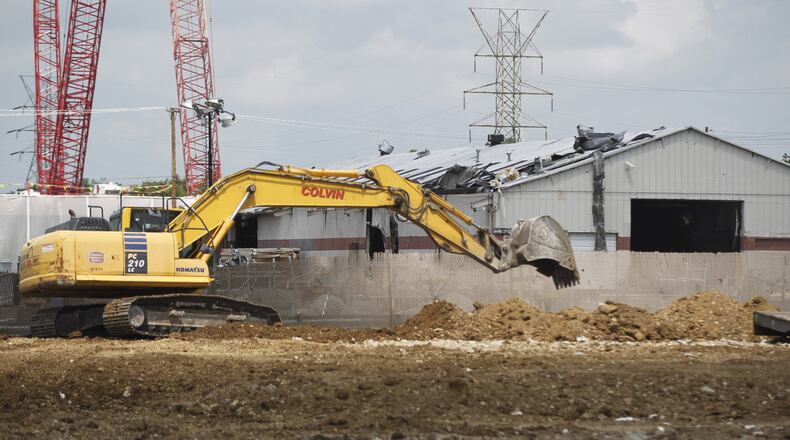“It gave us a very unique opportunity,” said Montgomery County Auditor Karl Keith, who released the findings Thursday. “We had before images of these impacted areas that had been flown in March, and then we were able to get images that were flown less than a week after tornadoes had struck.”
The auditor’s office started gathering damage information from a variety of sources, including data from the American Red Cross and from city of Dayton and Montgomery County building inspectors. But the GeoViewPort software the county purchased a couple years ago was quickly modified by its maker, iLookAbout, and proved to spot damage previously unnoticed, Keith said.
Keith said the initial count his office received from local agencies indicated about 2,500 affected properties.
Aerial images were made of properties in March during part of the county’s normal revaluation process. But when the National Weather Service upgraded the most damaging tornado to an EF-4, a contract provision kicked in requiring the vendor to re-fly the area at no cost.
The new imagery revealed damage to parcels not initially reported as affected, Keith said. The office began examining all parcels within a 400-foot buffer of where damage was known. In all, 17 auditor’s office employees in five departments scrutinized about 14,000 parcels, Keith said.
“We were able to plot about 4,500 specific, damaged properties,” he said.
“We now know with pretty reasonable accuracy the properties that had been damaged to some extent, where those are and … the level of damage incurred.”
In Sunday’s edition, the Dayton Daily News will pinpoint where those damaged properties are on a map and provide an analysis of the data, including which Montgomery County neighborhoods sustained the worst damage.
Nearly 15% of all property parcels in Harrison Twp. sustained damage, 371 either destroyed or with major structural damage. Nearly 10% of Trotwood’s parcels, or 1,106 were impacted, according to the survey.
Other Montgomery County areas sustaining significant tornado damage included Brookville, Dayton, Butler Twp., Perry Twp., Clayton, Vandalia, Englewood and Riverside.
The study noted everything from downed trees, to shingles off roofs to homes and businesses swept from foundations. Nearly 90 percent of the properties damaged were residential.
Keith said the data and map is just the first phase of looking into how the storm will ultimately affect the region.
“These numbers represent devastating losses to our community,” he said. “They represent a loss ultimately of revenue for these communities that fund schools and other public services that we rely on every day. It’s going to be a loss to our communities of the social fabric that have been torn by residents who are displaced. Most importantly, it’s a loss to families and businesses who had invested so much in their properties only to have them tragically and unexpectedly destroyed.”
Reduced taxes offered on storm-damaged properties
Owners who experienced tornado damage may seek to reduce the tax value of Montgomery County properties. Any reduction in value will be reflected on 2020's first-half tax bill. To apply, property owners must fill out and return an application to the auditor's office by Aug. 31. The form can be found at the auditor's tab on Montgomery County's website, www.mcohio.org, or by calling the office at 937-225-4326. The office will provide assistance with the form Monday from 3-6 p.m. at the Dayton Metro Library Northwest Branch, 2410 Philadelphia Drive, Dayton.
COMING SUNDAY
The Dayton Daily News on Sunday will show where tornado-damaged properties are on a map and provide an analysis of the data, including which Montgomery County neighborhoods sustained the worst damage.
About the Author

